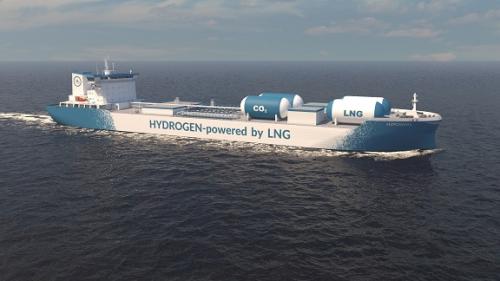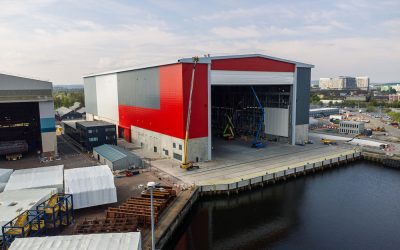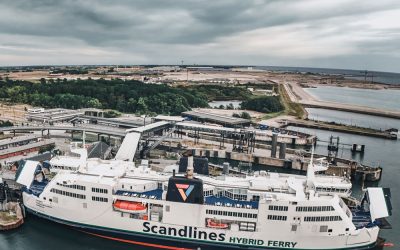Much of the discussion concerning hydrogen as a carbon-free marine fuel has focused on supply chain considerations, but a concept for a medium-range (MR) tanker announced in February proposes to instead use LNG to fuel a gas reformer for the onboard production of hydrogen for propulsion, as well as the capture of CO2.
Designed by Swedish naval architects FKAB Marine Design the MR Tanker, which has received Approval in Principal (AiP) by Italian classification society RINa, utilises currently viable technology developed by ABB and Helbio (a subsidiary of energy company Metacon AB). The idea is to offer shipowners a pragmatic way of IMO’s goals of a 70% reduction in carbon emissions while accepting that a reliance on fossil fuels remains likely for the foreseeable future.
Martin Holmgren, senior structural analysis engineer at FKAB, tells TNA that the company became a partner in the project after being approached by RINa about the feasibility of onboard hydrogen reformation. He comments: “We’ve designed many LNG ships, both fuelled and cargoed, but nothing like this before. I guess nobody has because it’s quite a novel concept.”
By combining LNG with steam in a Helbio gas former, the LNG’s methane molecules are split into hydrogen and CO2, with hydrogen then being fed directly into the internal combustion engines and fuel cells in ABB’s hybrid power system. Unlike conventional combustion however, the CO2 is captured and stored rather than emitted as exhaust gas.
Holmgren says there are a number of reasons why MR tankers were a good fit for the project, not least that it’s where FKAB has found the greatest demand for its services in recent years. “There’s also the benefit that you can use the captured CO2 to inert the tanks, which is an extra benefit that you don’t have on dry cargo or pax ships. A tanker also needs a lot of power for unloading; an ordinary MR tanker has both a big propulsion engine and big auxiliaries, but in this case we can combine it so there’s a lot less installed total power.”
However, he adds that the concept is highly flexible, with the possibility that the LNG and CO2 tanks could be incorporated within the hull rather than on deck, to improve stability for larger vessels. One major advantage is that the technology is intended to be scalable during the vessel’s lifetime, so while the initial order from an owner might incorporate just a single CO2 tank with the intention of running on 25% hydrogen (and the rest LNG) the decision could be taken later on to retrofit further CO2 storage at some later date.
Although that might exceed a tanker’s CO2 needs for inerting purposes, it’s generally anticipated that CO2 discharging facilities will become available at major ports within the next decade. In other words any vessel built to the design should be future proofed against the rising bar of IMO’s Carbon Intensity Index (CII) rating.
FKAB have held preliminary discussions with Wärtsilä as a potential engine supplier for the design. It was previously announced last year that the Finnish company had joined forces with Helbio, ABB and RINa on the project, not to mention its successful demonstration of running gas engines with a hydrogen blend of up to 25%. The fuel cells, which will be supplied by ABB’s partner Ballard Power Systems, also raise the possibility of an entirely electrical propulsion system, albeit such a solution is likely to prove cost prohibitive in the short term.
Holmgren says that the initial response to the concept from both old and potential new clients has been highly positive, with meetings already taking place, although it’s still too early to say whether that will coalesce into serious interest. In the meantime, FKAB is continuing to research how much potential there may be for energy recovery to further improve the gas reforming.
“Although this process is used on land they don’t have all this excess heat of a ship, so we’re just looking into how we take a more holistic approach. Theoretically we should be able to achieve lower consumption, but what happens when we put the hydrogen in? Besides all the benefits you might have a cargo that needs heating, for which we currently use a lot of the spare heat. So we have to check all these stages before we can say, but it looks really promising,” he concludes.






